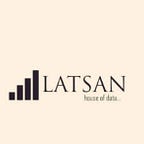Considerations When Staking on a CEX
A Brief Guide to the Benefits and Risks of Centralized Staking
Many of us are familiar with the concept of staking ETH on a centralized exchange (CEX), but few of us have ever considered the benefits for both parties. Did you know that even if you don’t stake ETH but choose to hold it on a CEX, the exchange may be able to stake that ETH and keep the yield? Now is a good time to make informed decisions about how to deploy your hard-earned ETH, and what’s in it for centralized exchanges.
Staking ETH on an Exchange
Exchanges commonly offer staking through a staking contract. Customers can opt to send ETH to the smart contract, and the yield will be paid out to the customer in ETH.
While there are some benefits to staking ETH on centralized exchanges, it pays to remember the crypto mantra: not your keys, not your crypto.
This is a great way for exchanges to show their commitment to the Ethereum network, and it’s also a convenient way for customers to earn a passive return on their ETH. However, there are a few things that customers should consider:
- Ensure the terms of the staking contract are understood, including the timing and calculation of expected yield.
- Assess the risks involved, as there is always the potential for slashing — this is a penalty associated with a network or validator failure which is enforced at the protocol level and results in the loss of ETH.
- Be aware of the fees charged by an exchange for the staking service.
- Understand what it takes to be able to exit your staked position. Usually, this will involve swapping the liquid ETH derivative, like cbETH or stETH, at a slight discount.
Benefits to the Exchange
Staking ETH can help to improve the liquidity of the exchange. When a customer stakes ETH, the customer is essentially providing the exchange with additional capital. This increases the number of trades that the exchange can process, which in turn improves the liquidity of the exchange.
Risks to Staking ETH on an Exchange
Some of the potential risks include:
- Security: Exchanges that offer ETH staking are vulnerable to security risks such as smart-contract exploits, or internal security threats such as employee fraud or theft.
- Regulatory: There is always the possibility of new regulations related to ETH staking. Exchanges may be required to obtain licenses or meet other compliance requirements in order to offer the service. Governments may impose taxes or other restrictions on ETH staking.
- Technical: There are also some technical risks to consider, for example network issues that prevent customers from accessing their funds or earning rewards.
- Market: Risk associated with fluctuations in the price of ETH during the staking period, which could result in losses for the customer. Additionally, the exchange may delist ETH or stop supporting staking at any time, which could also result in losses for the customer.
Wrapping Up the Benefits
ETH staking can benefit customers by providing a predictable yield while also contributing to network security. Staking benefits exchanges too, because it increases liquidity, creates revenue, and sometimes enables them to spin up their own liquid derivative. For an exchange that allows users to hold ETH but not to stake, it’s possible the exchange itself will be staking this ETH and keeping the yield, which may be permissible under certain circumstances. While there are some benefits to staking ETH on centralized exchanges, it pays to remember the crypto mantra: not your keys, not your crypto.
A version of this article initially appeared in BanklessDAO’s Decentralized Law newsletter on October 1, 2022.
Author Bio
Latsan is a seasoned public blockchain and metaverse speaker. He is a data analyst with expertise in web2 analysis and web3 on-chain analysis. He is also a content creator in the blockchain space.
Editor Bio
Trewkat is a writer and editor at BanklessDAO. She’s interested in learning as much as possible about crypto and NFTs, with a particular focus on how best to communicate this knowledge to others.
Designer Bio
Tonytad is a graphic designer who has worked locally and internationally with organisations and firms on over 200 projects, which includes branding, logo, flyers, cards, and covers.
BanklessDAO is an education and media engine dedicated to helping individuals achieve financial independence.
This post does not contain financial advice, only educational information. By reading this article, you agree and affirm the above, as well as that you are not being solicited to make a financial decision, and that you in no way are receiving any fiduciary projection, promise, or tacit inference of your ability to achieve financial gains.
Bankless Publishing is always accepting submissions for publication. We’d love to read your work, so please submit your article here!
More Like This
The Guardians of Ethereum by Brian Knier
The Importance of Self Custody by theconfusedcoin
ENS Tips for On-Chain Organizations by nonsensetwice
